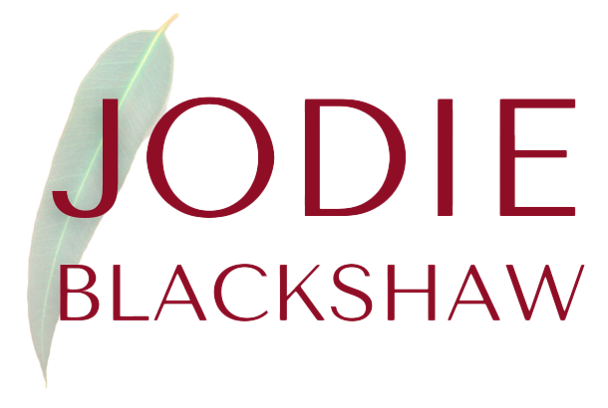..into the blue stretch of light..
STUDENT & CONDUCTORS NOTES
Conservation Focus:
Gang Gang Cockatoos
“..into the blue stretch of light..” is inspired by the life cycle of the Gang Gang and other black cockatoos. When researching information for this piece, I happened upon a remarkable piece of footage taken by citizen scientists from the Canberra Ornithologists Group. The footage shows a juvenile male Gang Gang taking his first flight. I have since learned that this is (currently), one of only two Gang Gang fledging’s caught on camera.
From here, my thoughts turned to nurturing, nesting and the enduring love and support offered by parents to their young ones. Hence the piece commences with small and still moments and develops to reflect the growth of the juvenile from their first flight into adulthood. It is hoped the piece captures the wild nature of Australian cockatoos, their boldness, dignity and courage whilst celebrating the life of Jim and Nell Stenning and parents everywhere who encourage their children to fly.
FUN FACTS
Faunal emblem of the Australian National Territory.
Call resembles that of a creaky door hinge.
All cockatoos use their feet like humans use their hands. All cockatoos are left-footed!
Nest in the hollows of old gum trees, are nomadic and mate for life.
March 2022: listed as endangered as it was found that their population had declined by 70% over the past three generations.
Many nesting sites have been lost due to increased urbanisation and the devastating Australian bushfires of 2019-2020.
Voted as one of Australia’s favourite birds, becoming aware of what a nesting site looks like, and ways to conserve them is vital to their survival.
Scientific Name: Callocephalon fimbriatum
Family: Cockatoo (Cacatuidae)
Current status: Endangered
About this piece
‘..into the blue stretch of light..’ is about life cycle, taking risks, growing up and being bold.
-
The opening of the work considers the first sights and sounds of a newly hatched chick. Sitting in a nest at the base of a hollowed out tree trunk, it is dark, warm and safe.
-
As the chick grows their feathers, they begin to venture to the top of the nest. Parents carefully protect the youngster from predators and when they’re ready, sit in the surrounding trees and call, lovingly, gently encouraging them to take their first flight.
-
A burst of bird calls and thundering percussion provides celebration and reflects the boldness of all cockatoos, as they fly to the tops of the trees when a storm is coming to warn all creatures that danger awaits.
-
An audience generated rain storm, along with unusual percussion sounds and echoing chords reflect the fully grown teenager now leaving the nest and venturing into the world beyond.
mm. 1-20
Cockatoos have been described as bold, nasty, annoying, majestic, loud and frightening. They come in all shapes and sizes. 14 of the 21 different species live in Australia. The Gang Gang is the shy one amongst them. Their call is not so jarring, but is most certainly easily distinguished. Watch this video that shares another piece of mine called “Light the Earth” that is about the first sunrise on Earth. Compare this “first” to the first time a chick feels the cool air on their raw and featherless bodies after hatching, senses first light when they open their eyes and feels the love of their nurturing parents nearby.
Then watch the rare footage captured in the second video of a wild white-tailed eagle hatching their chicks.
WHAT DOES THIS MEAN TO ME?
Think of the first time you have ever done anything... started at a new school, played a particular sport, the first time you played your instrument in front of others, or maybe just starting a brand new day. Whatever it is, think about how you feel. Now translate those feelings into words, a picture, a video blog or anything you like. Maybe there is a certain smell you remember from a specific experience, or maybe it’s just an overall feeling that can only be described as a colour, or texture. You don’t have to share it with anyone, just know that it’s there and that it’s yours. Use this mind map to help get your thoughts going.
Share - Mind map - Brainstorm - Experiment
Consider how these personal experiences impact the way you play the opening 20 measures. Discuss dynamics, balance, the attack of each note and the release.
Mind map ideas from the whole band.
Brainstorm what this means you will physically do on your instrument and as an ensemble.
Experiment with these ideas until you find something that works.
mm. 21-62
With a faster tempo and more rhythmic interest, this section represents the young chick preparing to take flight. As shown in this video below (taken by the Canberra Ornithology Group), the male chick is hesitant to leave the nest. According to the field notes, he has unsuccessfully attempted to make this flight several times before. His parents are either side of the nest, gently encouraging him to fly. You can sense his apprehension through his frequent calling and awkward feet.
The music increases in intensity and the “calls” between the Flute/Oboe and Trumpet sections become more and more frequent. The quaver figures overlaid by the piano represents the adrenaline the bird must be feeling as they prepare to leave the nest for the first time… flying!
WHAT DOES THIS MEAN TO ME?
This is SUCH a big risk! Have you ever taken a risk? (A risk where there is support around you…?)
When we take a risk - we need support. Now think of that support as the love, encouragement and energy surrounding the young bird, enticing them to fly for the first time. This support has been written into the music by way of teams:
Team 1. Rhythmic underlay: Clarinet 1, Clarinet 2, Alto Saxophone - Piano adds textural enhancement
Team 2. Harmonic foundation and resonance (mm. 21-34): Bassoon, Tenor Saxophone, Horn
Team 3. Melodic conversational “twitterings”: Flute/Oboe (A) and Trumpet 1/2 (B) – supported at different times with Xylophone/Euphonium
Team 4. Counter melody (commencing at mm. 34): Bassoon, Bass Clarinet, Baritone Saxophone, Horn, Euphonium, Tuba.
Team 5. Colour and highlights: Percussion
In order to take a risk you need to be ready, you need to be prepared and you need support.
ADDING EMOTIONAL MEANING TO THE MUSIC: What can YOU DO during bars 21-55 to support your team and create the feeling of taking a HUGE risk?
Discuss - Share - Brainstorm - Experiment
With your team, discuss the role your instrument plays at different times in the music.
Share thoughts discussed by each team with the whole band.
Brainstorm what this means each team will physically do, and whether or not it changes.
Experiment with these ideas until you find something that works
mm. 62-75
“So, when the long drought-winds, sandpaper-harsh,
were still, and the air changed, and the cloud came,
and other birds were quiet in prayer or fear,
these knew their hour. Before the first far flash
lit up, or the first thunder spoke its name,
in heavy flight they came, till I could hear
the wild black cockatoos, tossed on the crest
of their high trees, crying the world’s unrest.”
Excerpt from ‘Black Cockatoos’ by Judith Wright
The peak of the work happens at measures 55-56 when the bird takes flight. This is represented by a wild, piercing electroacoustic soundscape of Yellow-tailed Black Cockatoos and other Australian birds. From underneath this vibrant soundscape and the ringing chords from the ensemble, the audience are transformed into a soundscape depicting rain. Watch this video of yellow-tailed cockatoos and make sure you make it to the 55 second mark when you see footage of flight.
mm. 75-end
As the bird calls fade away, and the sound of the rain is replaced by whirly percussion instruments and cymbals, and the last fading chords occur, consider the moment when after many months of care and attention, the juvenile bird leaves the nest.
Turn your thoughts now back to the parents. They have given so much, offered love and support in every possible way. But there will always be that time when the young one needs to take flight, and find their own way. Of course they are proud but also, a little sad to see their children leave home.
Have you ever had to give away something you loved?
Has a good friend ever moved away?
Have you ever felt really proud? When? What happened?
Something else?
ADDING EMOTIONAL MEANING TO THE MUSIC: Think about how this feels in your heart. What can the band do to between 56 and the end to represent the feeling of moving away? How do you hold yourselves at the end? Is stillness important? How does the change in dynamics impact the mood of the music?
Consider - Mind Map - Brainstorm - Experiment
Consider the feeling of freedom along with a feeling of pride.
Mind map ideas from the whole band about this weird moment of pride and sadness.
Brainstorm how this impacts the music as well as the theatre of your performance.
Experiment with different ideas throughout these sections until you find what works for you.
TIP: Video yourselves in rehearsal and watch it back. How does it look from the audiences’ perspective??
How can we help save the Gang Gang Cockatoo?
-

Take part in the DNA feather collection study
Support the ACT Government and help them to better understand the population genetics of Gang-gang Cockatoos.
-

Use your concert as a fundraising event
Have donation bins at the front door at the end of the concert then donate your funds to the Birdlife appeal to help save the Gang Gang and Baudin’s Black Cockatoo.
-

Take part in the Gang Gang nesting-project
Help the Atlas of Life Coastal Wilderness, Budawang Atlas of Life and Canberra Nature Map collect information.



